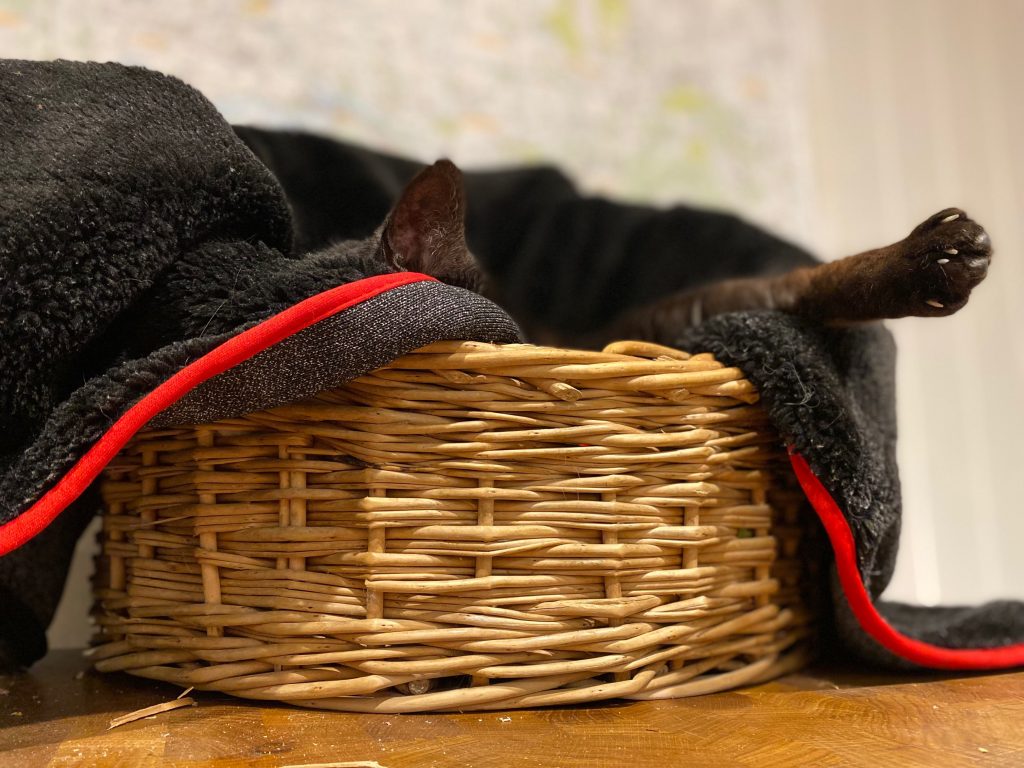Things you never knew about your sleeping cat.
Have you ever wondered about your cats’ naps? Where, when and why answered!
Where?
Your cat will intuitively find a quiet and secluded spot to sleep. This instinct stems from the need to hide from predators while being able to pounce on prey should it appear.
So why does your cat not sleep in its bed? Although you may feel the bespoke kitty kabbin you bought from Etsy would be perfect, your cat may well prefer the box it came in!
If there’s a clear exit route, small and even tight spaces are often favoured by cats. The snug fit has a reassuring sensation. The internet is full of videos and images of cats in small vessels, seemingly quite content!
The key to the exact location is generally warmth. Cat’s often seek out the heat of the sun. If there is none, curling up with a sibling or a human is warming, and the familiar scent is comforting.
A preference for particular textures can be alluring, and using your Wrapsio as your cat’s bedding (with the occasional treat!) will help build positive associations.
Having the ability to choose the right resting spot is extremely important to your cat. Access to these locations at different times of the day may vary, and in multi-cat households, a hierarchy often influences which cat sleeps where and when.
Depending on the nature of the cat, a high vantage point may be extremely important, whilst a nervous cat may be happiest under a bed. Give them options and allow them to decide where they rest.
When?
The pattern of moving from one sleeping area to the next is an intuitive survival technique. If your cat were to sleep in the same place constantly, the inevitable development of scent could allow a potential predator to identify or predict your cat’s location.
This regular bed-hopping means your cat sleeps multiple times during the day and night rather than one long period. These catnaps can range from around 50 to 100 minutes (1), with an average sleep period of about 16 hours a day.
The use of the term ‘catnap’ was first recorded in the 1880s. As our feline friends can revert to free-living feral within a generation, it’s easy to see why this protective behaviour remains vital to them.
“Let sleeping dogs lie” is a well-known adage, but the same should be said for cats.
It can be tempting to pat them, especially if they are making a little purring snore sound. However, this is not a conscious request for attention, but merely the noise produced due to the relaxing of your cat’s soft palate at the top of its mouth.
Although they may appear sound asleep, a healthy cat will only ever be dozing; their mind and body are always on standby. The ability to spring into action in response to prey or predator is always there!
Why?
A common question is why does my cat wake up so early!?
Another strong instinct determines when your cat is least likely to sleep. Dawn is the perfect time to catch an early bird, and the diminishing light at dusk is the ideal opportunity to prey on nocturnal rodents.
Even cats that rarely hunt retain these biological impulses and may become more social, playful, or demanding during these times of the day.
No cat is the same, and environmental factors can form your cats sleeping patterns. Whatever their routine, it should remain constant.
Noticing changes in the length of periods of sleep, body position or ability to wake up quickly may indicate an underlying problem. In these instances, keep a record and report your findings to your vet.

Although I’ve been around a long time (!), I’m new to blogging. What do you think? Do you have a top tip that I’ve missed? Let me know. Or maybe you know someone that could benefit from this information – if so, please share!

